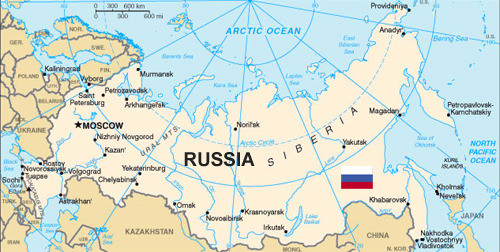Ellen Mickiewicz: “RT”

Subject: RT
Date: Sun, 8 Jan 2017 19:59:35 -0500
From: Ellen Mickiewicz <ellen.mickiewicz@gmail.com>
Ellen Mickiewicz, James R. Shepley Emeritus Professor of Public Policy and Political Science
Duke University
The Report from the U.S. Intelligence Community is notable for its factual mistakes and misleading conclusions. Whether misleading is deliberate or simply lack of information they could have accessed is not known. What is known is that the report is so far from factual, that much of it cannot be useful to any U.S. administration. The report also reflects badly on the state of intelligence generally. I say this, because for a long time, now, I have been researching RT, one of the chief, if not the chief, sources of threat to U.S. security as detailed in the DNI report.
The hacking story occupies a relatively limited part of the report. Previous experience studying media suggests that the shelf life is nearing its end: the election is over, and we can hardly expect President-elect Trump to support conclusions that undermine his own legitimacy. So, this slice of the report is sewn to a larger part on Russian propaganda, in general, said to be “weaponized” and more dangerous–leading to the implosion of American institutions and the democratic process.
RT, the Russian-government-backed cable and online program, and RT’s “success” on YouTube are now the focus. It is patently absurd and contradicts facts. I say this as a research scholar, with a fully explained and footnoted chapter on it coming out in the Oxford University paperback edition of my book, “No Illusions: The Views of Russia’s Future Leaders.”
For now, here are specific ways in which the Intelligence Community’s Report goes wrong. Annex A of the report focuses primarily on the CONTENT of what is on RT. If a handful of people turn it on, only THOSE FEW will ever access any content at all. So, the content tells us nothing at all about who is watching and with what effect. The report after pages on content goes on to quote what Russian editors of RT INTEND to ACCOMPLISH–again, with nothing about what they DO accomplish with RT [if anything]. Pages report RT’s ties to government. Again, no connection whatever to what if any EFFECT on exactly WHAT AUDIENCE in US.
We come to that last 3 pages of this Annex: two of them [one of which is entirely graphs] touch on possible EFFECT and they are very misleading and downright inaccurate.
1. RT’s TV audience: The report uses RT’s OWN estimate of audience and then ends the sentence “it does not publicize its actual audience.” Before this mild disclaimer, the report gives RT’s estimate of 550 million people worldwide and 85 million in the US. THIS IS WHOLLY IMAGINARY. IT REFERS TO POTENTIAL AUDIENCE: HOUSEHOLDS THAT CAN RECEIVE A SIGNAL ***IF AND ONLY IF**THEY BOTHER TO TURN IT ON.
They do not. Nielsen analyzed the top 94 cable news programs from December 2014 through March 2015 [these are cable news exclusively, excluding the big news giants] RT did not even make it onto the list, which ended with a fraction of a hundredth of a percent.]
In Europe, the audience is less than 0.1%. The Report seems unaware of or chooses not to show these data. Instead it shows “growth”, which is really meaningless. When the numbers are low, very small changes can be big percentages.
2. It’s YouTube that seems to be the shocker in the Report–such large numbers! Sure, unless you know [as the Report seems not to know] that 81% of the most popular RT videos over 5 years were created by foreign countries and have nothing to do with Russia or any propaganda campaign. RT goes after foreign videos of disasters [Fukushima nuclear plant or volcanoes] and violence catastrophes and buys the rights, gets the videos to the largest search engines and puts its logo at the top. ONLY 1% OF RT’S TOTAL EXPOSURE ON YOUTUBE ARE POLITICAL VIDEOS.
THAT’S IT! a report that is very short on facts, prone to leave the wrong impression among readers, and searching for a longer, fuller story than the fact of election-time hacking. Why did the Intelligence Community avoid the facts–which, after all, are not classified. Some neutral oversight body needs to check this out. Meanwhile, let’s have more information, more views, more research with much more stringent methods.
